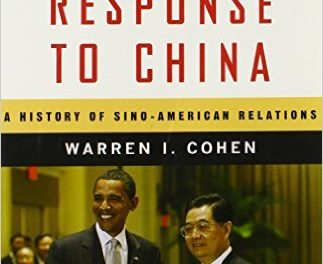Author: Jonathan Bloom
Publisher: Da Capo-Lifelong Books -366 pages
Book Review by: Sonu Chandiram
People living in the United States throw away more than 100 billion pounds of food a year, enough to end hunger for about 1.7 billion people, or around a quarter of our planet’s nearly seven billion inhabitants today. This wasted food represents about 40 percent to almost half of all the food produced in this country, depending on which source you consult, writes the author of this award-winning, eye-opening book Jonathan Bloom, a journalist.
A graphic way of looking at the amount of food wasted daily in he U.S. (if you can imagine it) is that it can fill the Rose Bowl, a football stadium in Pasadena, California with a seating capacity of 90,000 fans.
In the course of gathering material for this book Jonathan Bloom worked at many of the places where food waste occurs, especially on a large scale. He observed first hand how and how much food was wasted. The discoveries are shocking.
He takes us through the path from our typical food-growing sources – the farms – to the food distribution and consumption destinations – our supermarkets, restaurants and kitchens – and shows us how billions of pounds of food, collectively, are just discarded, while millions of people in other parts of the world are starving and suffer from malnutrition.
He gives us examples of how vast quantities of food are mindlessly discarded. For example, he cites an instance when he eye-witnessed thousands of perfectly-good heads of lettuce not picked up and loaded on trucks, but left to rot on a farm in Salinas, California.
In the need to pick up only produce that can survive long transportation times to supermarkets and not having any alternatives for what to do with the not-so-perfect produce, very large amounts of vegetables and fruits are simply wasted. Multiply such occurrences by the thousands of farms across America and you have hundreds of millions of pounds of produce gone to waste.
Wastage of vegetables is not limited to farms, Bloom points out. It is pervasive in all parts of the food distribution chain. From farms, vegetables go to supermarkets and grocery stores, and from there to restaurants and homes. Combined, a staggering 32 percent of harvested vegetables are simply thrown away, according to data he cites from the U.S. Department of Agriculture.
For each point of production, distribution and consumption, there is pervasive waste of food. And the reasons cited in the book for such behavior, I would say, range from ignorance to lack of discipline, and from laziness to sheer stupidity. Perhaps it is the overabundance of food that makes throwing it away almost a thoughtless exercise.
I am not sure if any study has been conducted on finding the causes of food-waste behavior. But Bloom presents ample data on the staggering amount of food waste in America, in the course of writing this book, which in my opinion is not only unique but perhaps the most important investigative work on this very important issue.
Jonathan Bloom is a freelance journalist who has over the years, contributed to the Boston Globe, the New York Times and the Washington Post. His investigative activities, interviewing, writing and reporting has focused on food waste, a specialty which he carved out for himself over the years. His interest seems to begun or sparked in 2005 when he helped out in the D.C. Central Kitchen, a “food-recovery group” that happens to be the oldest of such organizations in the United States.
Bloom writes that America wastes almost half of its food. He cites as his source for this information an article by four writers entitled “The Progressive Increase of Food Waste in America and Its Environmental Impact” in PLoS ONE, on November 25, 2009, on this site: http://plosone.org.
The other alarming statistic is that the amount of food waste has been growing at rapid rates. He states that when the Agriculture department studied this subject in 2007, its findings showed that 27 percent of available food was wasted in the U.S. And now that has increased to at least 40 percent, and perhaps to as much as 50 percent.
Instead of simply lamenting on food waste, Bloom presents recommendations on how it can be minimized in the various distribution and consumption points, with particular emphasis on the home by families and individuals, the basic units of food consumption.
He provides at the end of his book a section, “How to Avoid Waste and Save Money” for use at home, the supermarket and the restaurant. Along with it is a “Produce Storage Guide,” a list of tips on how and where to keep various vegetables, root crops and fruits fresher for longer periods of time.
I recommend this book for everyone to read: individuals, families, farmers, supermarket, grocery store, restaurant, transportation company owners and managers, concerned policy makers and anyone else who can take individual and collective individual action on the problem of food waste that plagues America.
Jonathan Bloom has done what a good journalist needs to do to write a good story: research and investigative work. But he has “gone the extra mile” by taking jobs to experience for himself and learn what actually goes on in a given industry, which makes for a superior outcome: a better story. We applaud his extraordinary efforts and this great achievement.






